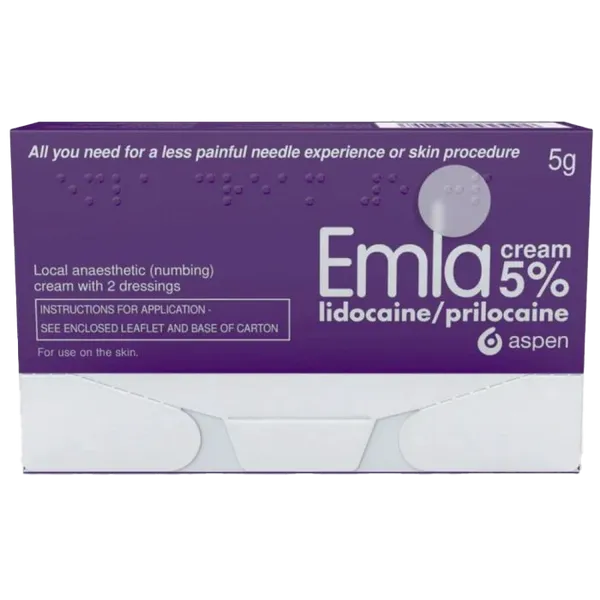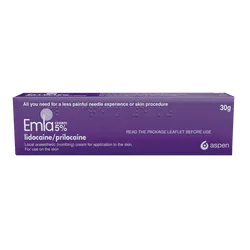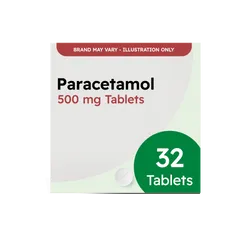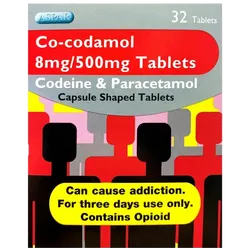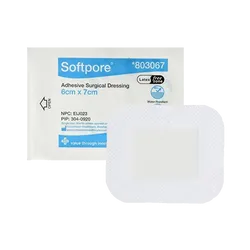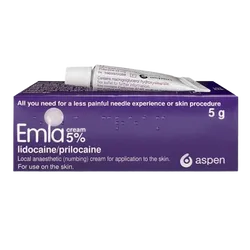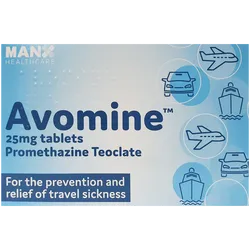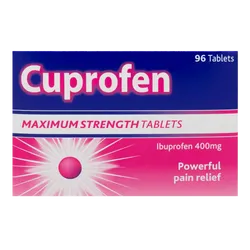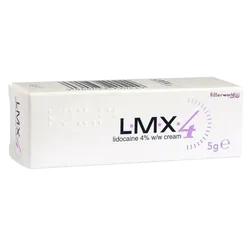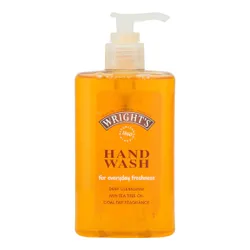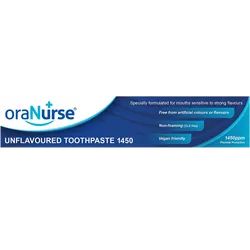Do not use EMLA Cream if you are allergic (hypersensitive) to lidocaine, prilocaine or any of the other ingredients of EMLA Cream.
Check with your doctor, pharmacist or nurse before using EMLA Cream if:
• You or your child are anaemic (a blood problem which means you have too few red blood cells).
• You or your child have a rare inherited illness that affects the blood called ‘glucose-phosphate dehydrogenase deficiency’.
• You or your child have a problem with blood pigment levels called ‘methaemoglobinaemia’.
• You or your child have a skin condition called ‘atopic dermatitis’. This is because the cream may need to be put on the skin for a shorter time.
• Your child is a pre-term newborn infant.
• Your child is younger than 12 months and is being treated at the same time with other medicines that affect blood pigment levels ‘methaemoglobinaemia’.
Please tell your doctor, pharmacist or nurse if you are taking, or have recently taken, any other medicines. This includes medicines that you buy without a prescription and herbal medicines. This is because EMLA Cream can affect the way some medicines work and some medicines can have an effect on EMLA Cream.
In particular, tell your doctor, pharmacist or nurse if you or your child have recently used or been given any of the following medicines:
• Medicines called ‘sulphonamides’ such as sulfamethoxazole.
• Other local anaesthetics.
• Medicines to treat an uneven heart beat, such as mexiletine or amiodarone.
Talk to your doctor, pharmacist or nurse before using EMLA Cream if you are pregnant, may become pregnant or are breast-feeding.
The medicines in EMLA Cream (lidocaine and prilocaine) are passed into breast milk. However, the amount is so small that there is generally no risk to the child.
Ask your doctor or pharmacist for advice before taking any medicine if you are pregnant or breast-feeding.
Important information about some of the ingredients of EMLA Cream
EMLA cream contains polyoxyethylene hydrogenated castor oil. This may cause skin reactions.
Always use EMLA Cream exactly as your doctor, pharmacist or nurse has told you. You should check with your doctor, pharmacist or nurse if you are not sure.
Do not use EMLA Cream on the following areas:
• Cuts, grazes or wounds, excluding leg ulcers.
• Where there is a skin rash or eczema.
• In or near the eyes.
• Inside the nose, ear or mouth.
• In the back passage (anus).
• On the genitals of children.
EMLA Cream should not be used on an area of newly shaven skin larger than 600 cm² (600 square centimetres, e.g. 30 cm by 20 cm) in size.
The maximum dose is 60 g.
Do not get EMLA Cream in your eyes. This is because it may irritate your eyes. If you get EMLA Cream in your eye by mistake, rinse your eye well with lukewarm water or salt (sodium chloride) solution. Be careful to avoid getting anything in your eye until feeling returns.
If EMLA Cream is accidentally swallowed, talk to your doctor, pharmacist or nurse straight away.
If you use more EMLA Cream than your doctor, pharmacist or nurse has told you to, talk to one of them straight away, even if you do not feel any symptoms.
Symptoms of using too much EMLA Cream are listed below. These symptoms are unlikely to happen if EMLA Cream is used as recommended.
- Feeling light-headed or dizzy.
- Tingling of the skin around the mouth and numbness of the tongue.
- Abnormal taste.
- Blurred vision.
- Ringing in the ears.
- There is also a risk of ‘acute methaemoglobinaemia’ (a problem with blood pigment levels). This is more likely when certain medicines have been taken at the same time. If this happens, the skin becomes bluish-grey due to a lack of oxygen.
In serious cases of overdose, symptoms may include fits, low blood pressure, slowed breathing, stopped breathing and altered heart beat. These effects may be life-threatening.
If you have any further questions on the use of this product, ask your doctor, pharmacist or nurse.
Like all medicines, EMLA Cream can cause side effects, although not everybody gets them.
Severe allergic reactions (rare, affect less than 1 in 1,000 people)
If you have a severe allergic reaction, stop using EMLA Cream and see a doctor straight away. The signs may include sudden onset of:
• Rash.
• Feeling short of breath.
• Low blood pressure, which may make you feel faint or dizzy.
• Swelling of the face, lips, tongue or other parts of the body.
The skin may become bluish-grey due to a lack of oxygen. If this happens to you , see a doctor straight away.
Other possible side effects:
Common (affect less than 1 in 10 people)
• Redness, slight swelling, or pale skin where the cream was used. This usually goes away after a short time.
Uncommon (affect less than 1 in 100 people)
• A mild burning or itching sensation when the cream is put on the skin. (When EMLA Cream is used on the genitals, this is a common side effect, affecting less than 1 in 10 people.)
• A tingling feeling where the cream was put on the skin.
Rare (affect less than 1 in 1,000 people)
• Mild allergic reactions (which may cause rash or swelling).
• Small red dots on the skin where the cream was applied. This is more likely in children with skin problems such as ‘atopic dermatitis’ or ‘mollusca’.
• Eye irritation after getting cream into your eyes by mistake.
If any of the side effects get serious, or if you notice any side effects not listed, please tell your doctor, pharmacist or nurse.
Keep out of the reach and sight of children.
Do not store above 30°C and do not freeze.
Do not use the EMLA Cream after the expiry date which is shown on the tube.
Medicines should not be disposed of via wastewater or household waste. Ask your pharmacist how to dispose of medicines that are no longer required. This will help to protect the environment.
